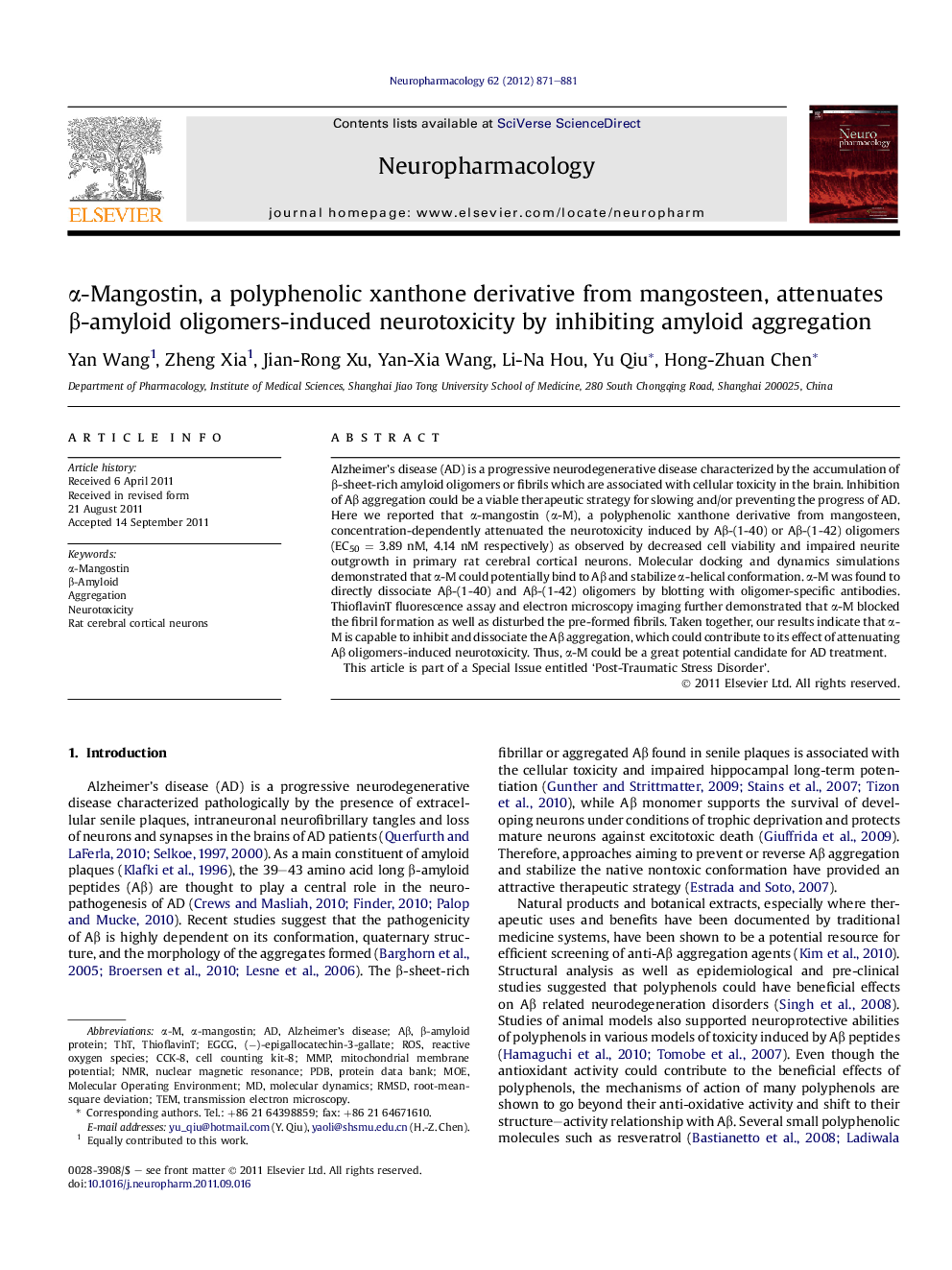| Article ID | Journal | Published Year | Pages | File Type |
|---|---|---|---|---|
| 2493785 | Neuropharmacology | 2012 | 11 Pages |
Alzheimer’s disease (AD) is a progressive neurodegenerative disease characterized by the accumulation of β-sheet-rich amyloid oligomers or fibrils which are associated with cellular toxicity in the brain. Inhibition of Aβ aggregation could be a viable therapeutic strategy for slowing and/or preventing the progress of AD. Here we reported that α-mangostin (α-M), a polyphenolic xanthone derivative from mangosteen, concentration-dependently attenuated the neurotoxicity induced by Aβ-(1-40) or Aβ-(1-42) oligomers (EC50 = 3.89 nM, 4.14 nM respectively) as observed by decreased cell viability and impaired neurite outgrowth in primary rat cerebral cortical neurons. Molecular docking and dynamics simulations demonstrated that α-M could potentially bind to Aβ and stabilize α-helical conformation. α-M was found to directly dissociate Aβ-(1-40) and Aβ-(1-42) oligomers by blotting with oligomer-specific antibodies. ThioflavinT fluorescence assay and electron microscopy imaging further demonstrated that α-M blocked the fibril formation as well as disturbed the pre-formed fibrils. Taken together, our results indicate that α-M is capable to inhibit and dissociate the Aβ aggregation, which could contribute to its effect of attenuating Aβ oligomers-induced neurotoxicity. Thus, α-M could be a great potential candidate for AD treatment.This article is part of a Special Issue entitled ‘Post-Traumatic Stress Disorder’.
► We discovered α-mangostin (α-M) attenuated Aβ oligomers-induced neurotoxicity. ► Molecular docking and dynamics simulations showed α-M could bind and stabilize Aβ. ► α-M was found to directly dissociate Aβ-(1-40) and Aβ-(1-42) oligomers. ► α-M inhibited the formation of Aβ fibrils, disturbed pre-formed fibrils. ► α-M could be a great potential candidate for AD treatment.
